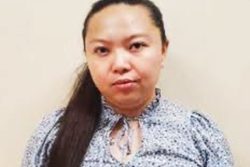First the word came from President Irfaan Ali, and then it was repeated two weeks later by Finance Minister Ashni Singh during his Budget presentation. The President was reported as saying that resources would be allocated for the establishment of a new art gallery and museum, while in Dr Singh’s rather economical amplification of this news, the public learnt that the sum of $2.7 billion would be assigned for the revitalisation of Guyana’s cultural landscape. Exactly how much of that, however, would go towards the art gallery and museum was not said.
This is all something of a mystery to those with an interest in local cultural matters, for don’t we have two state-run museums and an art gallery already? Are these proposed institutions to be set up in addition to what already exists, or are they a replacement for what we have already?
Castellani House was the brainchild of Mrs Janet Jagan shortly after the PPP/C first came into office in 1992. It provided a permanent exhibition space for the various artworks by Guyanese which had previously been unceremoniously stacked in the Department of Culture. In both a political and a heritage sense the location was a particularly inspired choice on her part. It had been the home of PNC President Forbes Burnham (Hoyte never lived there), a man much reviled by the PPP and its membership who under normal circumstances would have been disinclined to preserve it.
It was also, however, a heritage building, since it had been designed by perhaps this country’s greatest late-nineteenth century architect, Cesar Castellani – hence its name. It had been constructed for the curmudgeonly George Samuel Jenman, the first Curator of the Botanical Gardens, who had all kinds of objections to its design which he wanted amended before he would move in. It subsequently became the abode of the colonial Directors of Agriculture before Burnham took up residence there.
By making Castellani House the home of the National Art Gallery, Mrs Jagan saved the building from dereliction or outright destruction, immunised it from its Burnham association and gave an attractive permanent exhibition site to the nation’s art collection. It has certainly proved its worth over its thirty years of existence, given its collection mandate, its permanent displays and special exhibitions, and its role as a venue for lectures and seminars on cultural matters in general.
But – and it is a big but – it had one serious drawback, and that was the fact it was a wooden building. As such it represented a greater risk to the collection in fire-prone Georgetown than a concrete edifice would have done. If, therefore, the plan is to build a modern concrete structure designed with minimising fire hazards in mind, and with strategies in place to quickly move works in the event of such a disaster, then the cultural community would probably not raise objections.
What they would take exception to is if Castellani House is left abandoned or, as is more likely, is taken over for some non-cultural purpose. Some years ago the gardens were desecrated by the erection of an ugly structure with a security role. One hopes the President does not have it in mind to extend the functions and personnel of that establishment and accommodate them in a heritage building. Such lack of aestheticism and contempt for the nation’s patrimony, should it occur, would belie the expressions of cultural support emanating from the current government, and would violate of the vision of one the ruling party’s founders.
Which brings us to the enigma of what President Ali means by a new museum. It is not that there is not need for one, such as a sugar museum, to give but one example, it is that since Independence there has never been any museum policy in this country, and there is no one here currently in a position to draft such a blueprint. Without a larger museum policy there is simply no point in talking about new museums.
It would have made more sense if money had been allocated to hire someone (or even more than one person from different fields) from the diaspora or the region to work with local people possessing relevant cultural credentials such as archaeology, in order to create a museum master plan. Such a plan could look not just at the development of national museums, but also local ones. This would be in addition perhaps to addressing questions of the preservation of sites, such as rock paintings and carvings in the south of Guyana.
What one hopes is that it is not the government’s plan to replace the Walter Roth Museum, for instance, and that this is the significance of the references to the ‘new museum’. Just as Castellani House is nowadays situated uncomfortably close to a security centre, the Walter Roth is right next door to State House, and has been the target of more than one President for the housing of security personnel. The last one to make the attempt was former President David Granger, who finally backed down after a national outcry.
Before there is further speculation about what the government has in mind in this area, the Minister of Culture needs to explain to the nation exactly what is involved in a new art gallery and museum.








